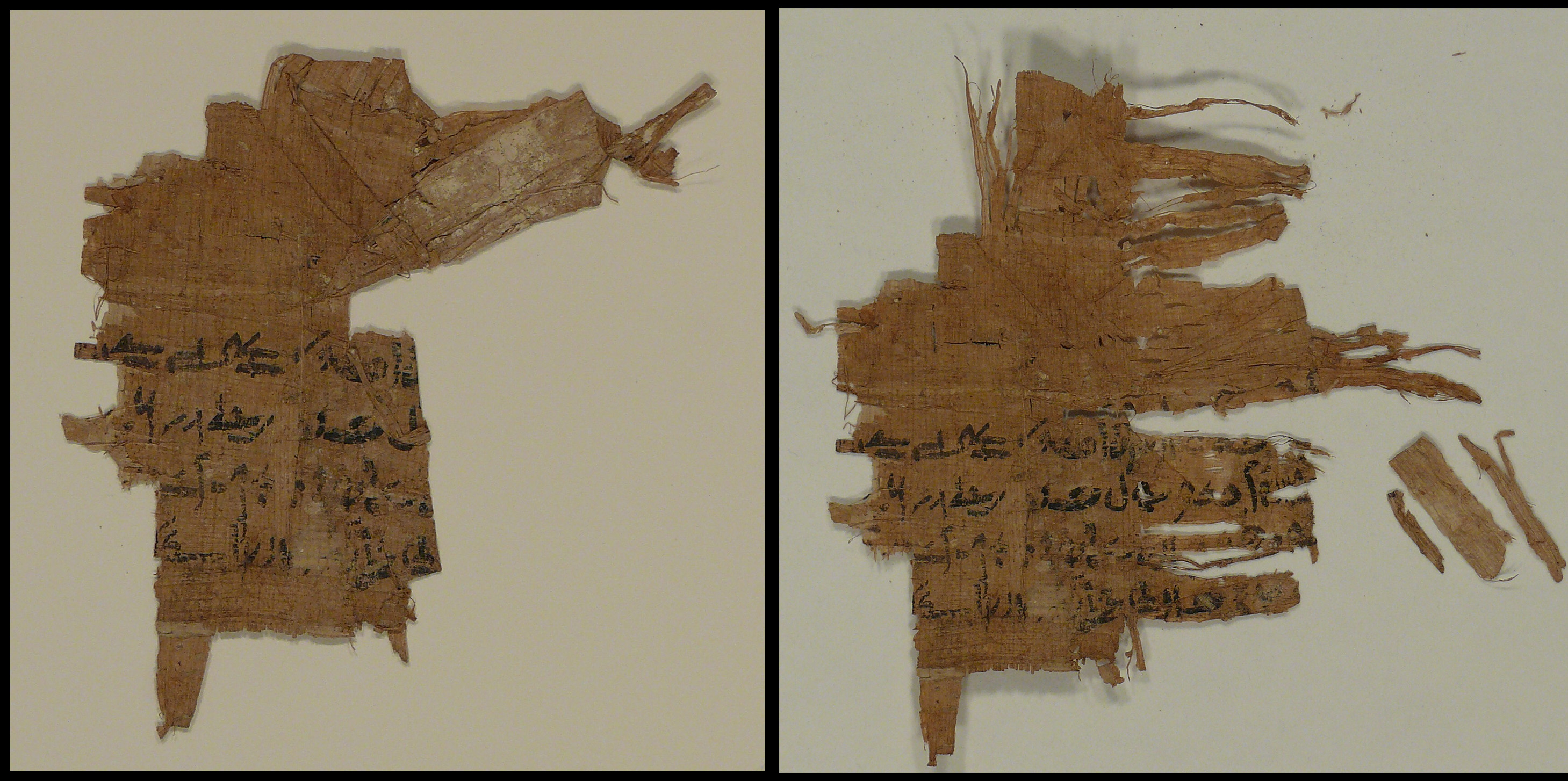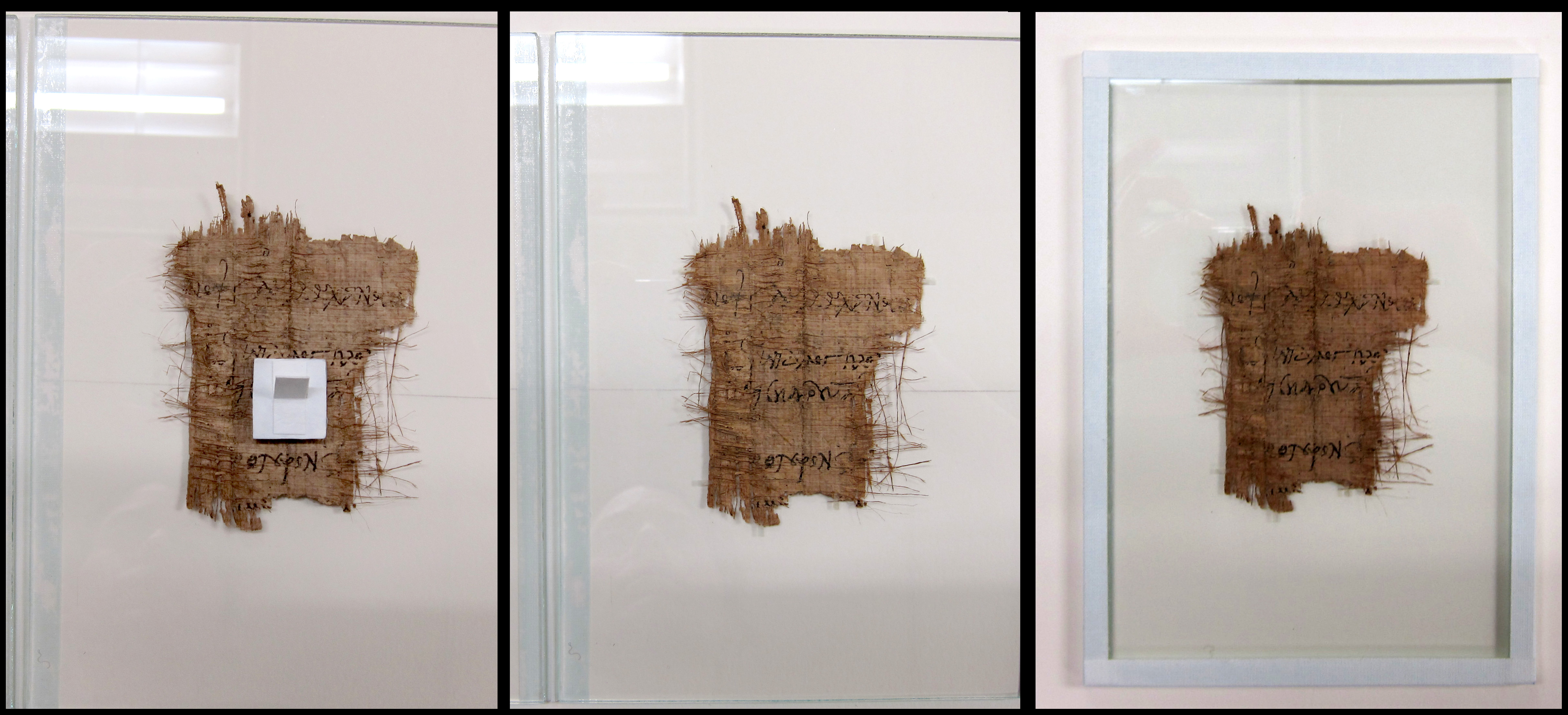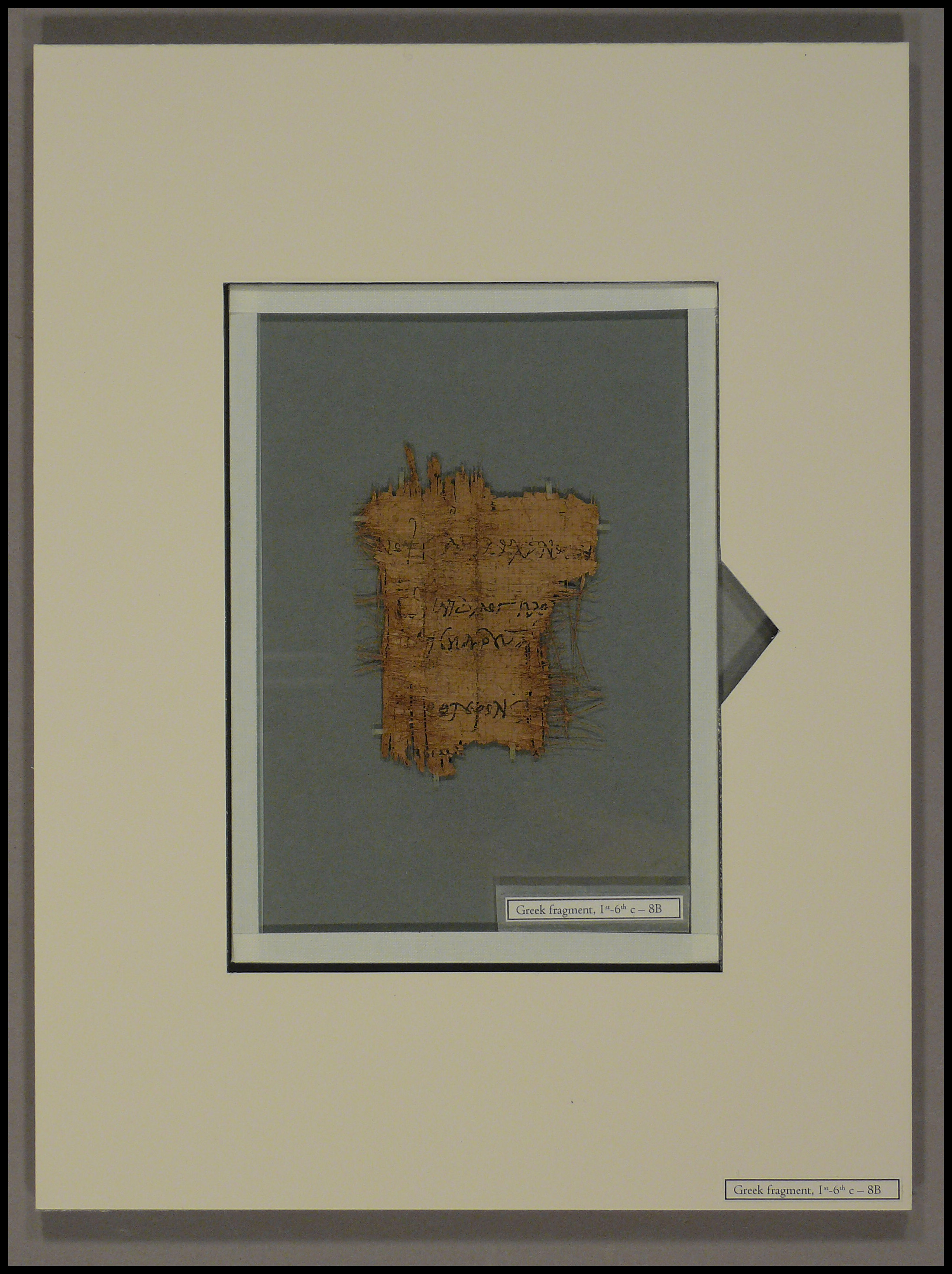J.M.Iacchei
In an earlier post, I shared some highlights from the Seminar in Papyrus Conservation at The University of Michigan I attended last summer. I mentioned that the greater majority of papyri at Cornell University were given to The University of Michigan in 1972, but that President Andrew Dickson White’s first papyrus purchase as well as fragments of papyrus contained within the Bruce Ferrini Paleography collection remained here in Ithaca among Cornell University Library’s collections. This later collection includes examples of various historical writing systems – hieroglyphics, Demotic, Greek, and Coptic scripts on fragments of papyrus dating from 1500BC – the 6th century A.D. Due to lack of protective enclosures and condition, this collection has been under-utilized and under-studied.
Applying what I learned at the seminar, I was able to reduce loose surface dirt, open up fragile folds, re-align fibers, bridge areas that had become separated, and rehouse the papyri fragments contained within this paleography collection.

Left: before treatment; Right: after treatment, including loose fragments previously adhered to verso
These items were removed from their old plastic sleeves (which release plasticizers and hold static, problematic for friable media), treated, and rehoused between glass to improve storage conditions and increase accessibility for study and instruction. Glass, the recommended storage material, allows for greater clarity of the inscription on the fragment as well as the visibility of the laminate structure of the papyrus itself, recto and verso. The disadvantage of glass is that it can break, but most often, especially with smaller examples, it is the glass that takes the impact of the damage rather than the papyrus.

Left: The edges of the glass are aligned (1/8 inch annealed soda-lime glass, with edges sanded, free of bubbles and scratches). Right: One edge of the glass is sealed with Filmoplast SH linen tape.

Left: The fragment is placed on the lower glass surface and held in position with a small weight; Center: The fragment is anchored to the glass using tiny (hard to see, but they are there) strips of glassine coated with dextrin. The glassine strips require very little moisture and pressure to adhere the fragment to the glass. Right: The remaining three edges of the glass are sealed with Filmoplast SH linen tape.
I am grateful to the University of Michigan for sharing their expertise that developed the skills that have allowed these materials to be cared for and safely stored.

